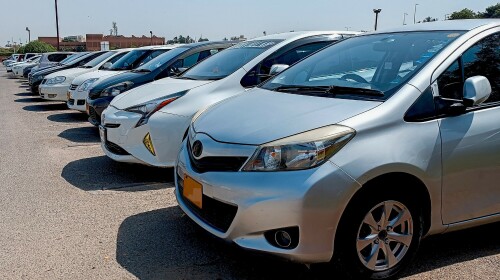Sindh’s Revenue Disparity: Vehicle Fees Outpace Agriculture Tax
The Sindh government’s fiscal outlook reveals a projected collection of Rs9.35 billion in motor vehicle registration charges for the current fiscal year, ending June 30, 2025. Budgetary documents show this sum greatly exceeds the Rs4 billion expected from provincial income tax on the extensive agricultural sector.
These figures underscore a persistent economic imbalance, indicating that individuals in the middle and upper agricultural income brackets, including the rural elite, exhibit considerable spending on lifestyle amenities. Despite this, their tax contributions remain notably modest. Consequently, the burden of taxation has increased on compliant industrial and service sectors, alongside salaried individuals outside agriculture.
The province anticipates higher earnings from vehicle registration fees, despite their comparatively lower rates—ranging from 1% to 5% of vehicle value, based on engine capacity.
Conversely, agricultural income faces steeper tax rates, from 15% to 45%, starting January 1, 2025. Furthermore, a super tax ranging from 1% to 10% is imposed on substantial agricultural incomes, while corporate farming incurs taxes between 20% and 29%.
Minimal Contribution from Agriculturists
During the initial half of FY25 (July–December), the applicable agriculture income tax varied from 5% to 15%. Nevertheless, agriculturists continue to contribute disproportionately little to provincial tax earnings.
Agriculture is a significant income source for approximately half the provincial population (55.7 million), encompassing rural inhabitants such as small-scale farmers, landowners, individuals, and large-scale agricultural businesses, including livestock.
Muhammad Abrar Polani, an auto analyst at Arif Habib Limited, suggested that approximately 40% of total vehicle sales nationwide are to residents in rural areas.
Around 40% of the vehicles sold in Sindh are purchased by individuals residing in rural parts of the province.
Additional analysts observed that vehicle purchases peak in rural areas during winter and summer harvest seasons, as well as around Eid-ul-Adha, when farmers primarily sell livestock in urban centers.
Hamdan Ahmed, an auto analyst at Optimus Capital Management, noted this week that the agricultural season and public sector development program expenditures are driving increased sales of passenger cars, SUVs, and LCVs during May 2025.
Vehicle sales (excluding tractors, buses, and two/three-wheelers) increased by 38% year-over-year to 15,396 units in May, boosted by eased highway restrictions after recent canal protests, public sector development spending in late FY25, and the wheat harvest, despite pre-budget expectations.
Deeper Insights from the Numbers
While vehicle ownership increases in rural Sindh, revenue collected from agricultural income tax remains considerably low. This indicates a more profound reality: wealth is evident on the roads, but is not reflected in tax revenues.
Recent estimates indicate that agriculture accounts for approximately 23.54% of Pakistan’s gross domestic product in FY25, yet its contribution to tax earnings remains around 1%. Federal Finance Minister Muhammad Aurangzeb stated that provinces have enacted legislation for income tax on agriculture, anticipating a substantial increase in collections for the upcoming fiscal year starting July 1, 2025, as agriculture income tax is a provincial concern.
Contrary to Aurangzeb’s forecast, the Sindh government aims to gather Rs8 billion in agricultural income tax in the next fiscal year (FY26), commencing July 1, 2025. This amount remains lower than the projected Rs9.35 billion in motor vehicle registration fees for both the current FY25 and the upcoming FY26.
All four provincial governments have recently legislated agriculture income tax to align with the federal government’s commitment to the International Monetary Fund (IMF) to increase tax collection to Rs14.307 trillion (10.7% of GDP). The Sindh government has criticized the federal government for making this pledge without consulting the provinces.
The agriculture income tax is projected to potentially increase costs for agricultural producers, who might pass the tax burden to consumers.
A significant portion of the motor vehicle registration fees is generated from passenger vehicles, SUVs, and LCVs, collected by Sindh’s Excise, Taxation, and Narcotics Control Department at rates ranging from 1% to 5% of the vehicle’s value. The department collects nominal amounts from tractor registrations (Rs2,000/unit) and motorcycle registrations (0.5% to 2% of the value).



Comments (0)
No comments yet. Be the first to comment!
Leave a Comment